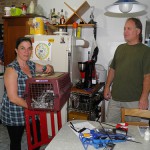 The town of Oyster Bay wants to shut down Bobby Horvath, the wildlife rehabilitator you call when you’ve got a coyote, owl, hawk, or pelican problem in NYC.
Keep reading NYC’s top wildlife rehabber may be shut down by overreaching suburban zoning code
 MT’s only wildlife sanctuary may close because it’s not meeting federal regulations, but it won’t say which ones.
Keep reading Closing MT’s only wildlife rehab center, home to bear, lynx, Ted Turner’s magpie?
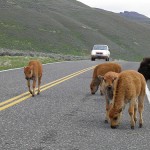 Canyon Ministries, which pushes a creationist view of the Grand Canyon, is turning to Yellowstone, where they see animals’ cooperative relationships as proof they didn’t just evolve.
Keep reading Creationists see animals’ complex relationships as proof they didn’t just evolve
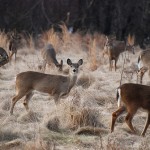 For the first two years they’re going to just kill as many deer as they can, regardless of gender. Then they’ll switch to killing 3 does to every 2 bucks. Killing bucks doesn’t really do anything to the population; one buck will mate with many does. They could kill a lot fewer animals if they would lean more heavily on the does–and right from the start.
Keep reading Coyotes Couldn’t Control Valley Forge Wolves, Critics Say. Tell that to Yellowstone Elk
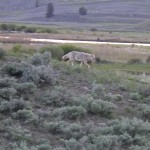 The $121 million Wildlife Services agency killed 5 million animals in 2008 at about $24 apiece. They mainly target coyotes for sheep ranchers and starlings and blackbirds for eating grain, including birdseed crops.
Keep reading 5 Million Animals on the USDA Hit List
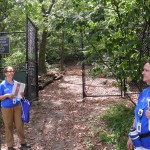 The Hallett preserve has been off-limits to the public since 1934 as a bird sanctuary. But the Central Park Conservancy offers a handful of half hour tours every year or so and I got to go on one today.
Keep reading Central Park Opens Secret Sanctuary for 30 Minutes
 Photo from 1010 Wins
Cops captured a coyote in lower Manhattan Thursday and are holding the young female at least overnight. She may be released into Van Cortlandt Park as early as Friday night, people who were in on the discussions say. Right now she’s sleeping off tranquilizers at Animal Care and Control.
Dumping the coyote in the Bronx may sound like Manhattan just dumping its unpleasantries in an outer borough, but there’s solid reasoning to it. Most New Yorkers don’t realize that Van Cortlandt and Pelham Bay Park already have coyote populations.
No one is sure if this is the same coyote that’s been hanging around Central Park the last couple months. My guess is that it is. One thing that surprised most people is that the coyote turned out to be a female. People had figured the Central Park coyote as a young male who got pushed out of his territory by dominant males in mating season.
But it does seem that the Central Park Coyote was out and about yesterday. Bruce Yolton said the Central Park coyote–who has a habit of leaving the Hallett Nature Preserve just after dusk–was seen wandering around the preserve woods at lunch yesterday. On Wednesday 1010 says the canine was spotted down near the Holland Tunnel, but evaded cops. Of all the ways a coyote could get into Manhattan, I don’t think the Holland Tunnel was high on anyone’s list. Cops finally caught her Thursday in a parking
Keep reading Manhattan’s Captured Coyote May Be Released in the Bronx
 The Hallett Nature Sanctuary on Central Park South been in the news this month as the daytime napping place of at least one coyote/coywolf. This four-acre island of nature is normally almost invisible to park goers, even though it’s in the most popular corner of Central Park.
When the park was created this whole area was a big, smelly swamp known to carry malaria. The New York Times describes how the wealthy residents of 5th Avenue finally fixed the problem of stagnant water in their cellars. Frederick Law Olmstead drained the swamp and created the Pond, with a promintory left natural.
The pond was popular for “swan velocipede boats.” An 1887 Times story says the boats “got no rest from morning to night,” as a quarter million people visited the park on the first day of spring, watched a black swan protect her nest on a rock in the Pond and observed only two prairie dogs emerge, “the most certain sign of warm weather.” In the winter the crowds headed to the pond for ice skating. Trolleys used to wear a signal red ball if it was currently frozen enough to skate. The current Wollman Rink is built over a filled in section of the pond.
The preserve area has been off limits to regular New Yorkers since 1934, when it was named the Bird Sanctuary. In 1952 the Times reported: “59TH ST. PARK LAKE TO BE RID OF FILTH; Complaints of Offensive Debris Bring Admission of ‘Laxity.”
Keep reading Secrets of the Hallett in Central Park
 Update: 1010 Wins has amazing video of the coyote giving cops the slip around 23rd Street around 3 a.m. last night. That means he headed south instead of his usual north. Cops chased him–while someone shouted Let him go! Let him go! Then he was spotted heading back up to 57th Street, probably the Hallett Nature Preserve, where he’s been sleeping in Central Park.
The coyote (really a coywolf) continues to prowl around Central Park, despite what he hear are efforts to trap and euthanize him. I went up to Central Park last night to catch a glimpse. I got nothing. But Bruce Yolton tracked him out of the Hallett Nature Preserve, where he sleeps during the day, and through a circuitous path of the lower park, avoiding people. I called the Department of Environmental Conservation, but so far haven’t heard back about their plans.
The state DEC is trying to capture the coyote and euthanize him to test for rabies, which is infecting raccoons in the northern part of the park, one wildlife rehabilitator told us. Killing an animal is the only sure way to find out quickly whether it has rabies. Or you could just wait and see if he gets sick. This rehabber is qualified to take the coyote in for a quarantine period (10 days) so he wouldn’t have to be killed, but so far the DEC hasn’t given the okay. If someone just so happens to catch the coyote and bring it to
Keep reading Is the Noose Closing on the Central Park Coyote?
 The coyote that’s been living discreetly in Central Park for the last month is now on wildlife officials‘ hitlist. Fearing rabies, the Department of Environmental Conservation is trying to trap the coyote and euthanize it, wildlife rehabilitators familiar with the case say. That’s too bad because local rehabbers have offered an alternative: They’re willing to put the coyote in the standard 10-day quarantine, then find a suitable release site outside the city.
In the past, the DEC has trapped coyotes and at least made an effort to release them. (Hal, the 2006 coyote, died from stress, rat poison and heartworm, according to the necropsy.) What’s different this time is there is widespread rabies in the raccoon population in upper Manhattan, especially the north woods of Central Park, where the coyote trots after spending the day sleeping in the isolated Hallett Nature Preserve near 57th Street and 6th Avenue.
[youtube=http://www.youtube.com/watch?v=aLZdBVZhOrA&hl=en_US&fs=1&rel=0&color1=0xe1600f&color2=0xfebd01]These animals aren’t exactly making a reappearance in Manhattan after being vanquished for centuries. They are a slightly different species than ever lived here before; they aren’t really coyotes, which live out west, but coywolves–a hybrid of versatile, small western coyotes and the gray wolves that were hunted out of the east. Jon Way, a biologist at Eastern Coyote Research, is pushing for them to be classified as a native species since they weren’t introduced by humans and are the natural product of canines evolving to survive in the habitat altered by humans.
Coywolves are now established across the eastern U.S.,
Keep reading Central Park Coyote Faces Death Despite Offer of Reprieve
|
Subscribe SUBSCRIBE TO THE BLOG

|










Recent Comments